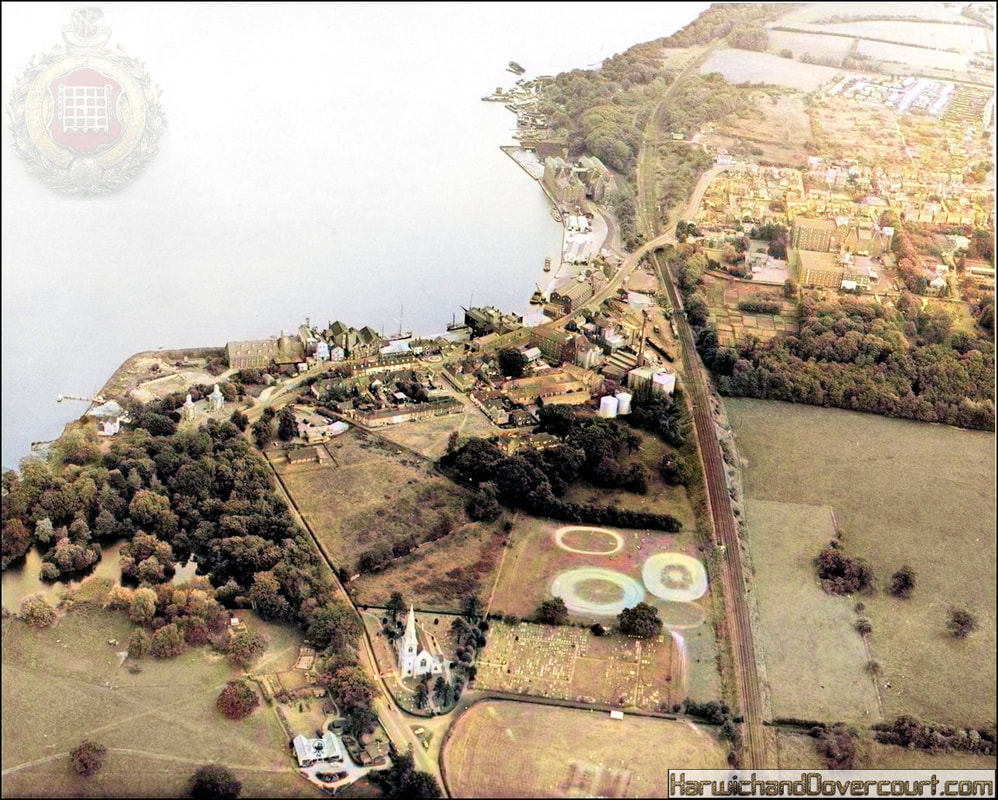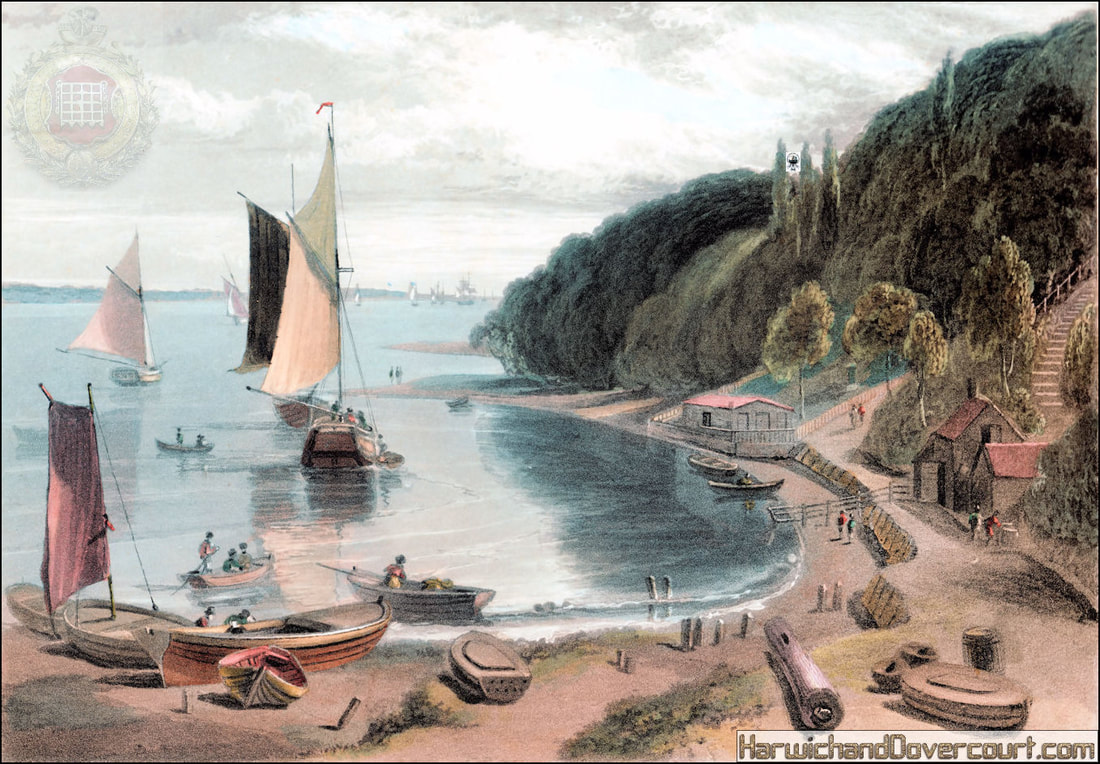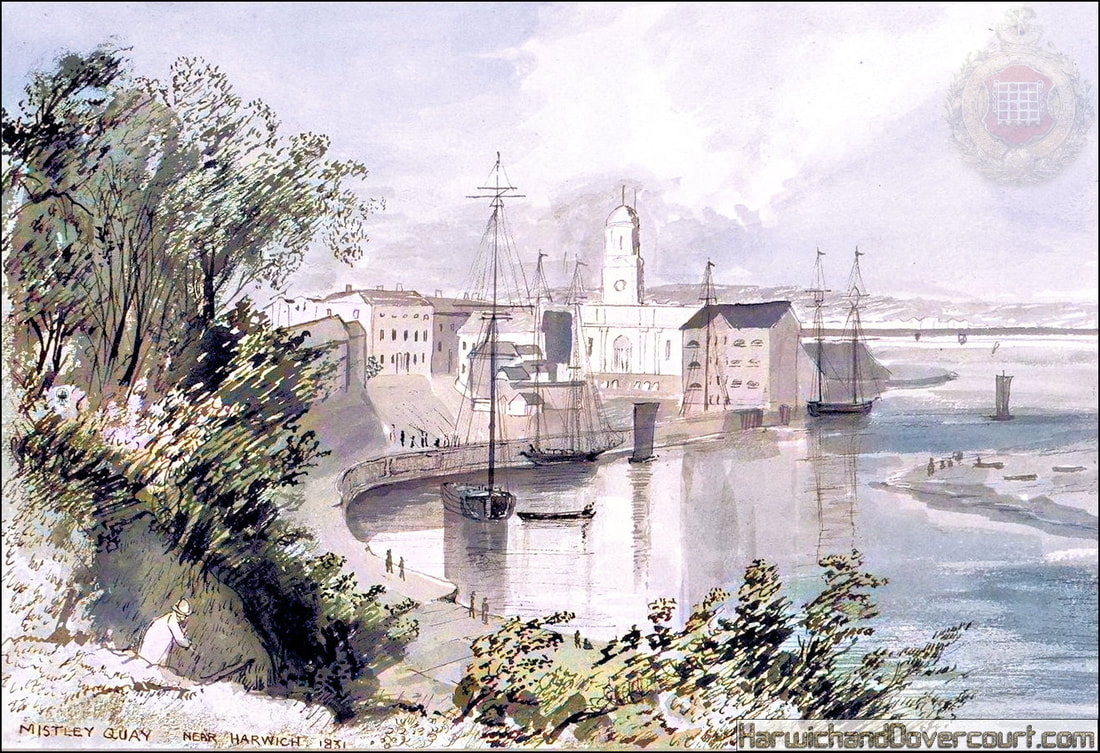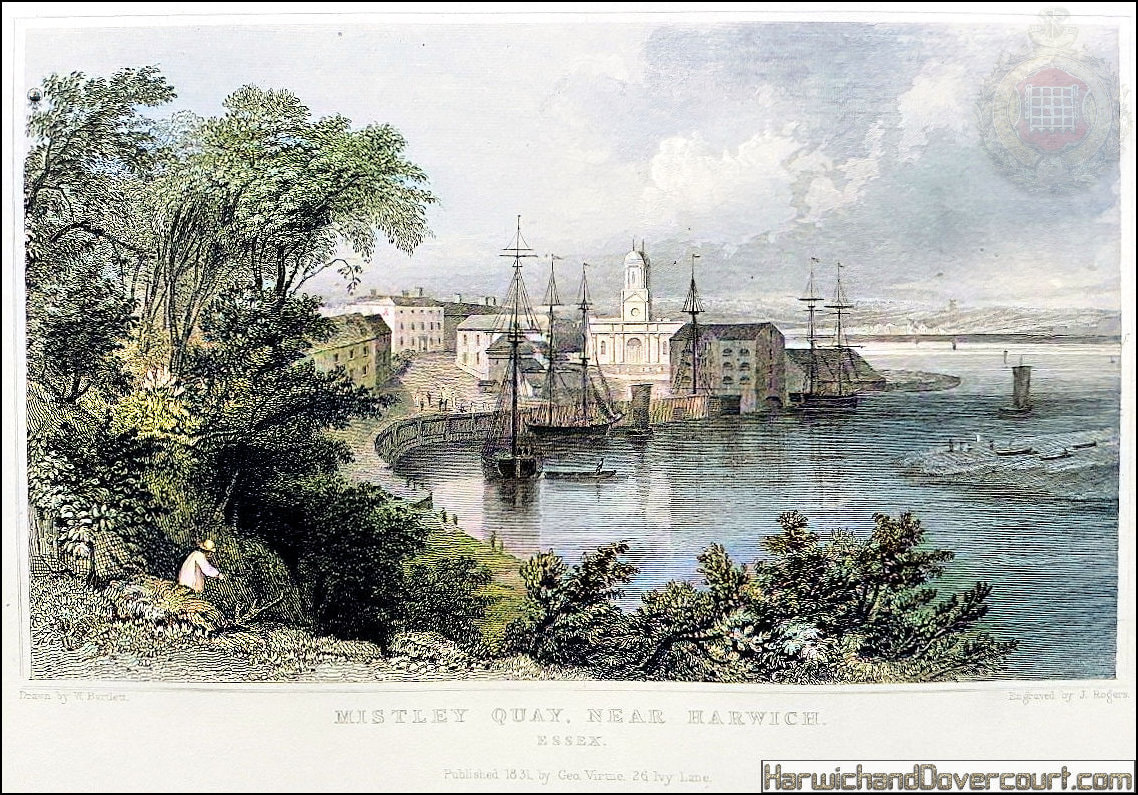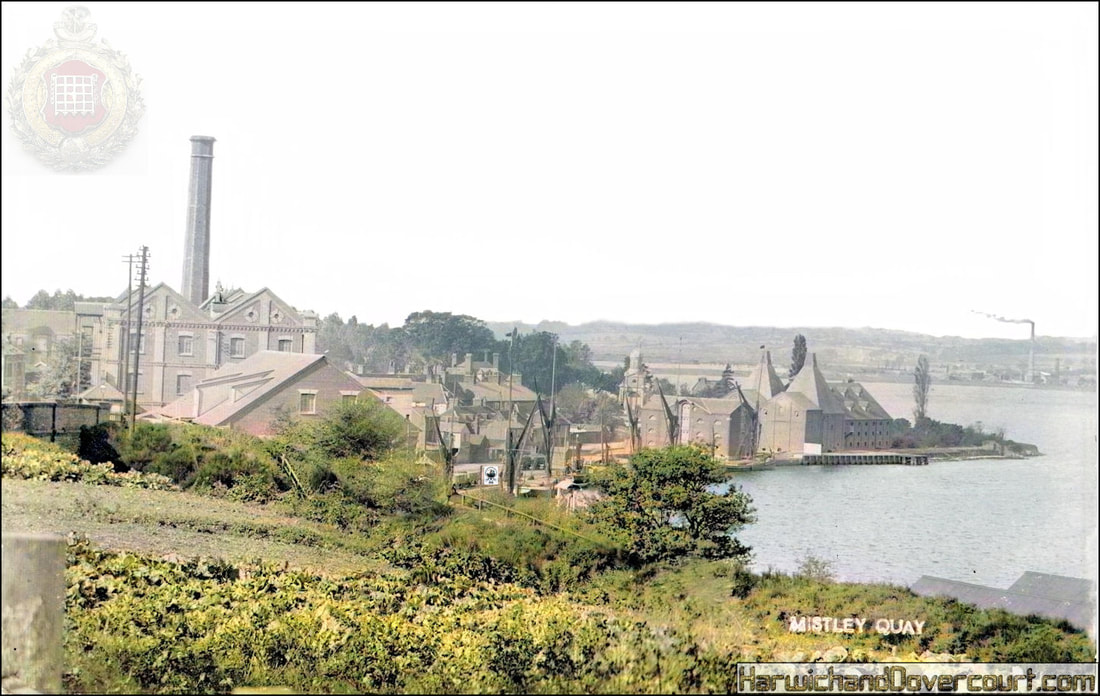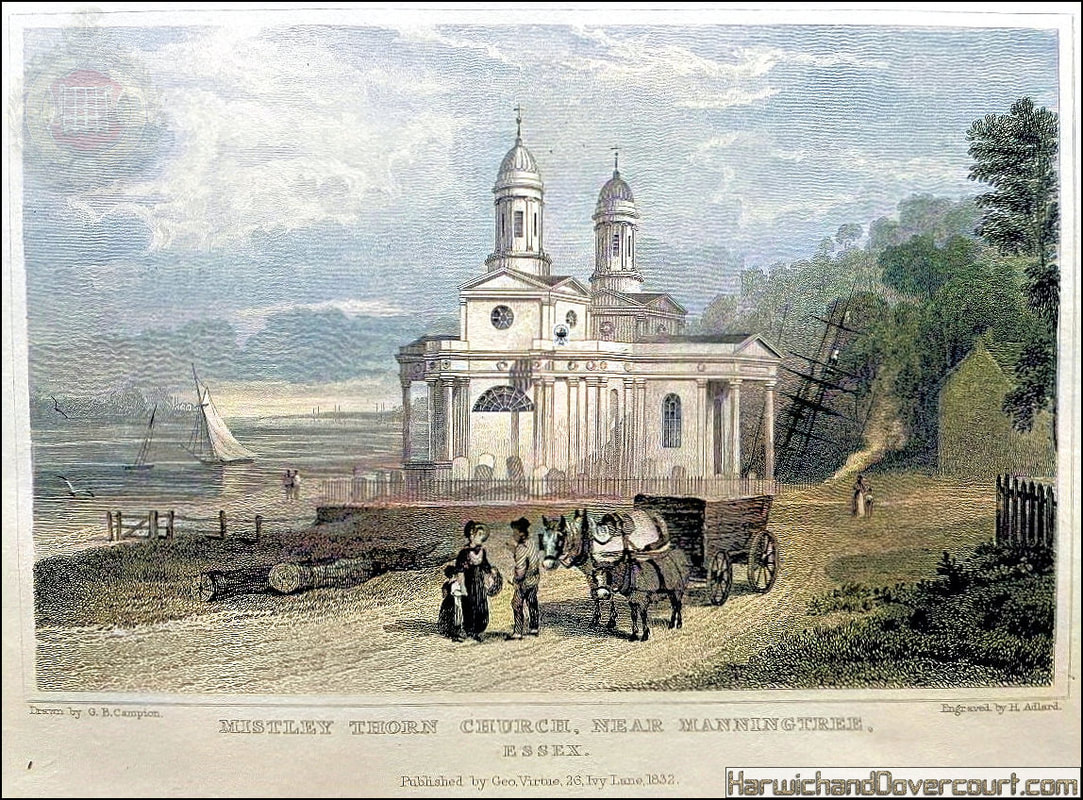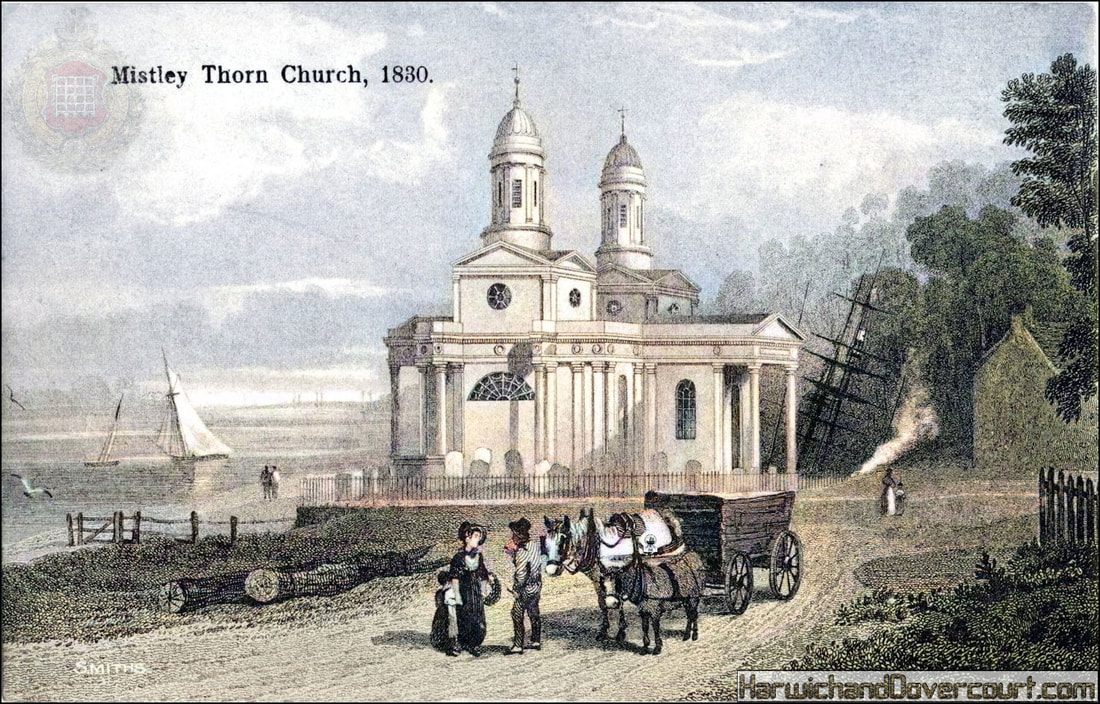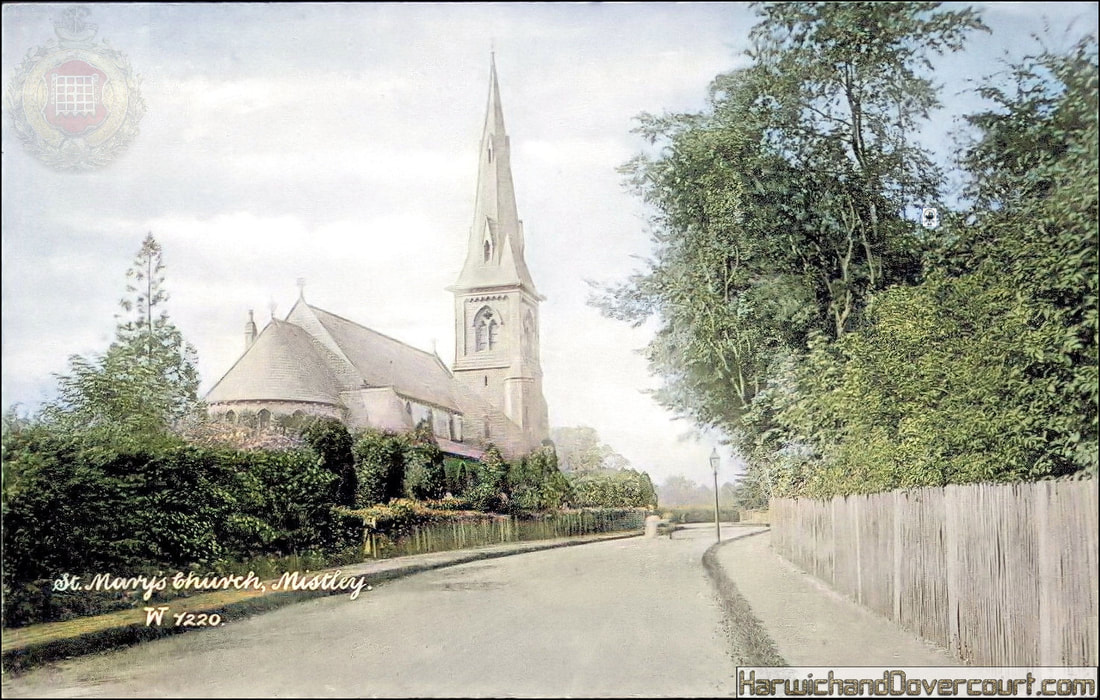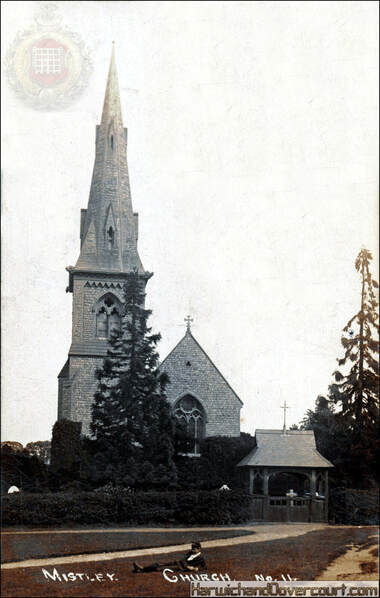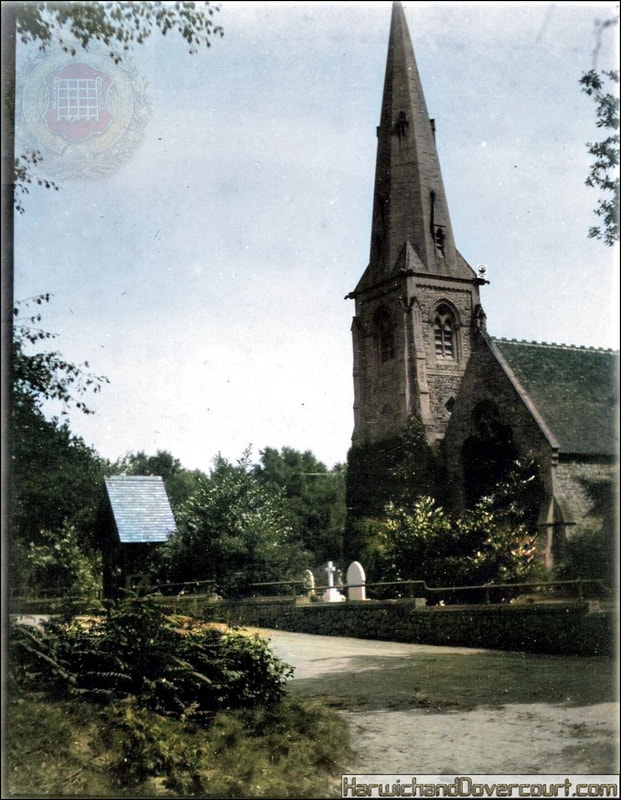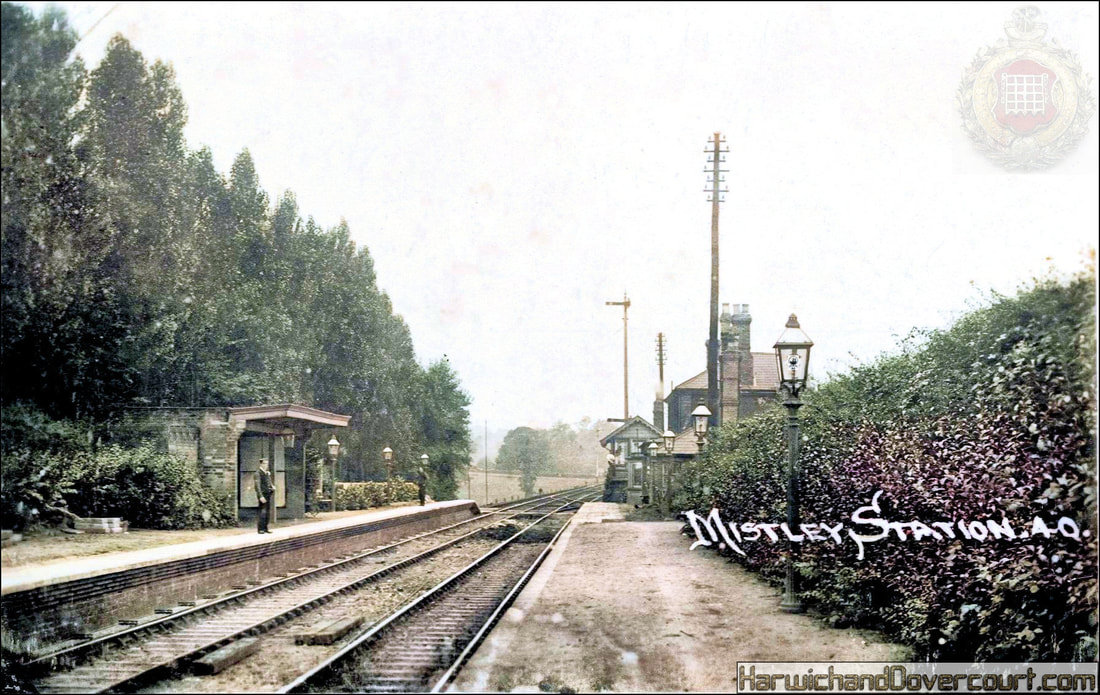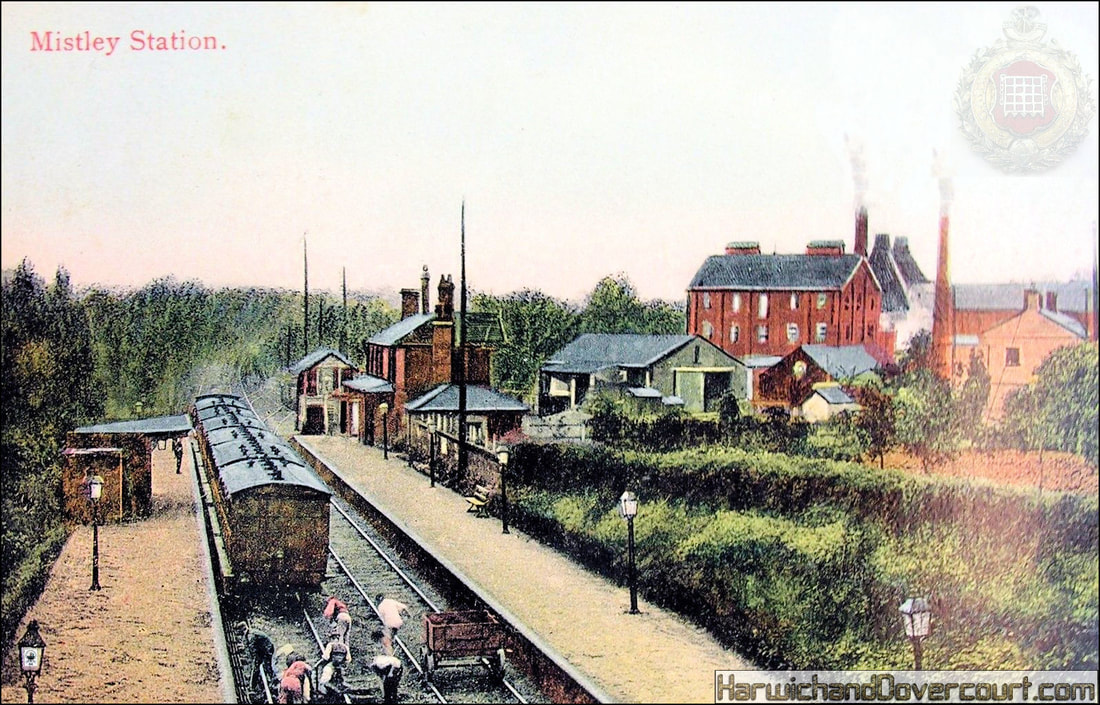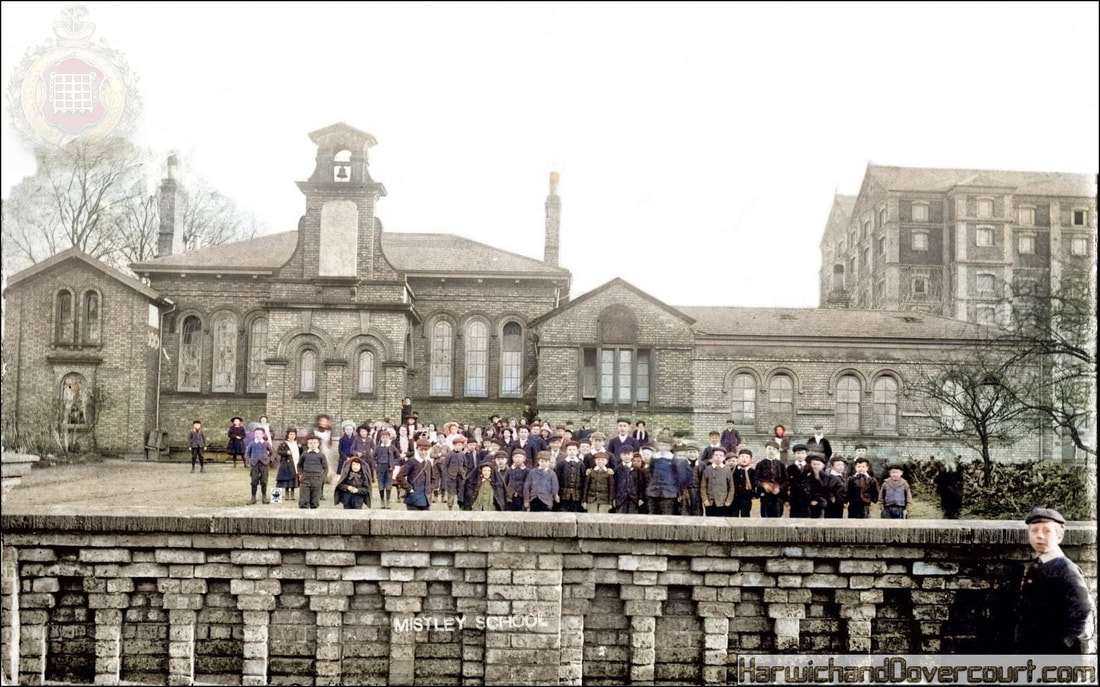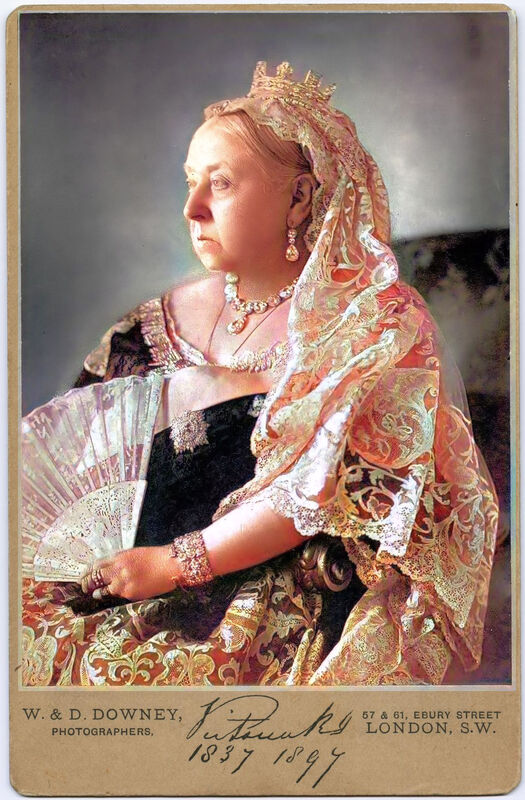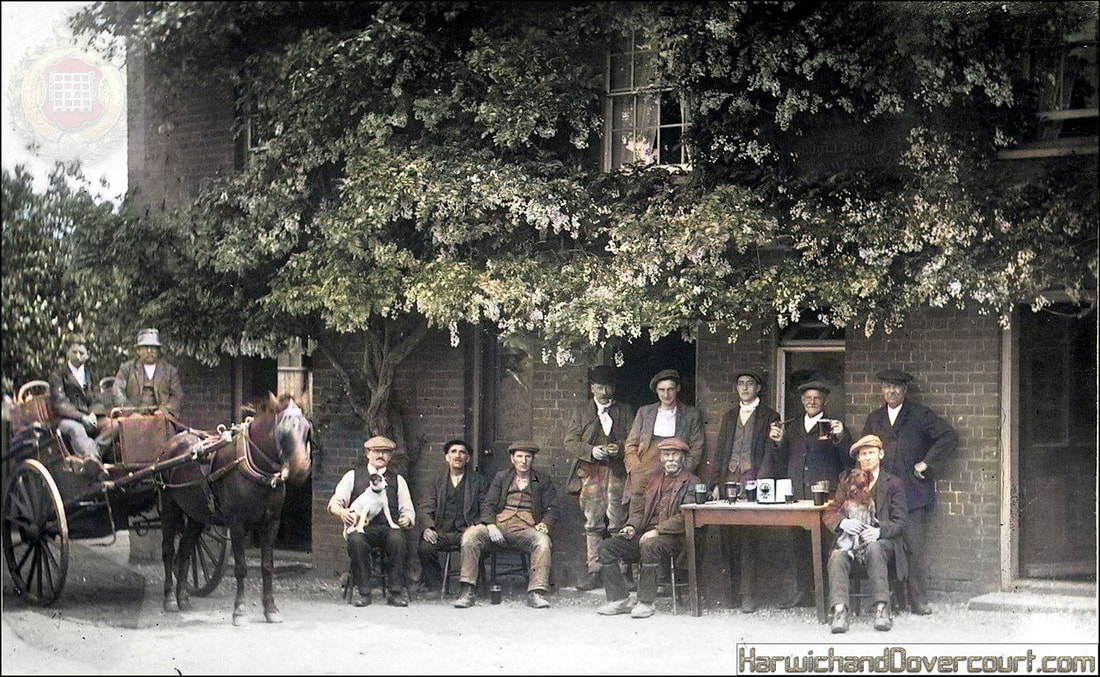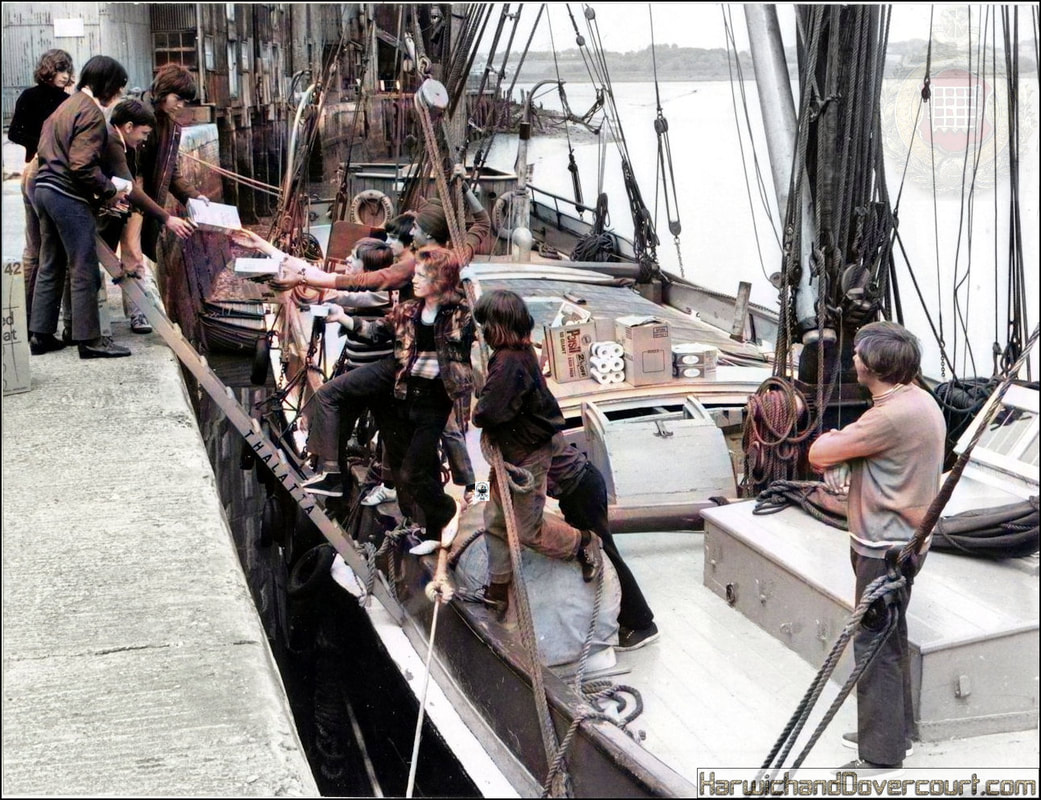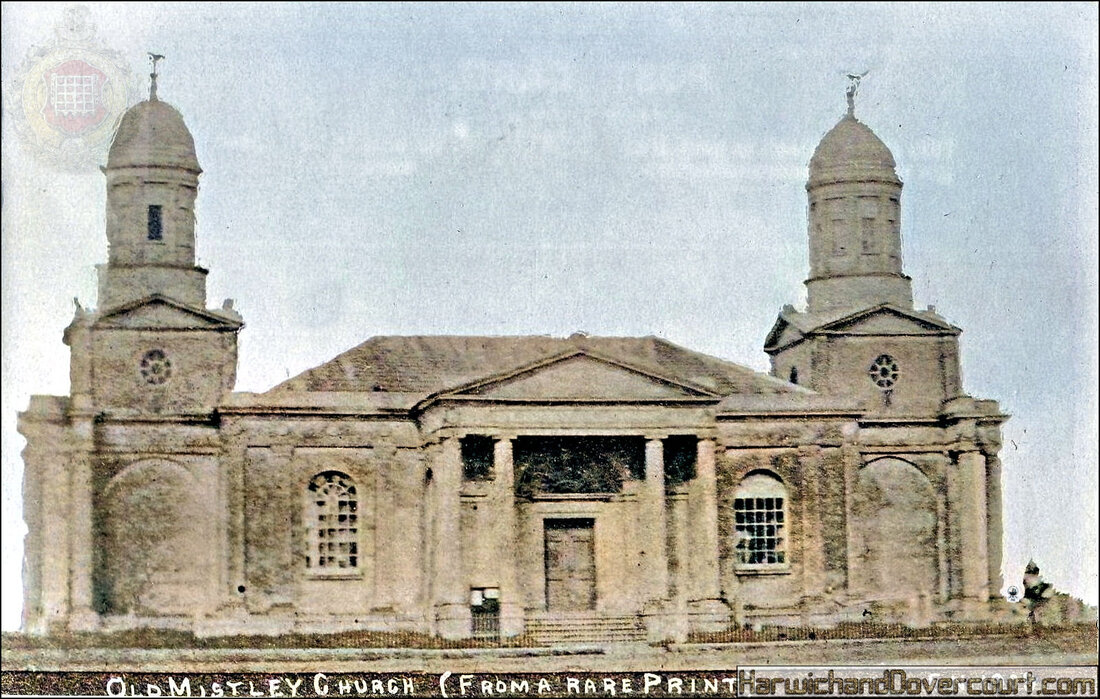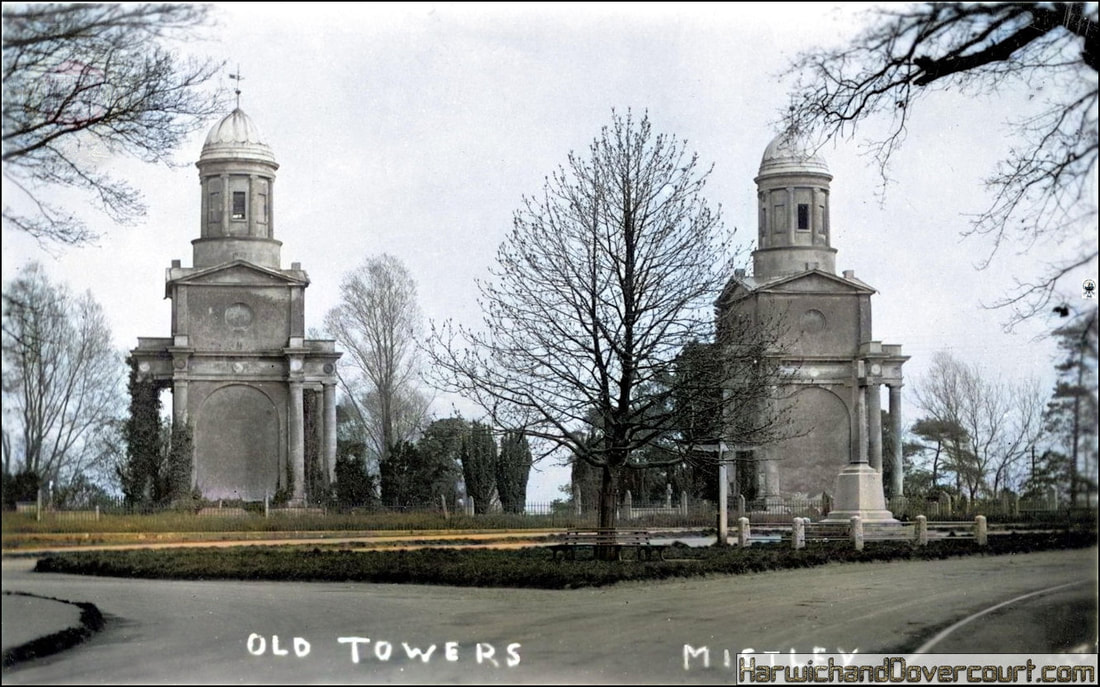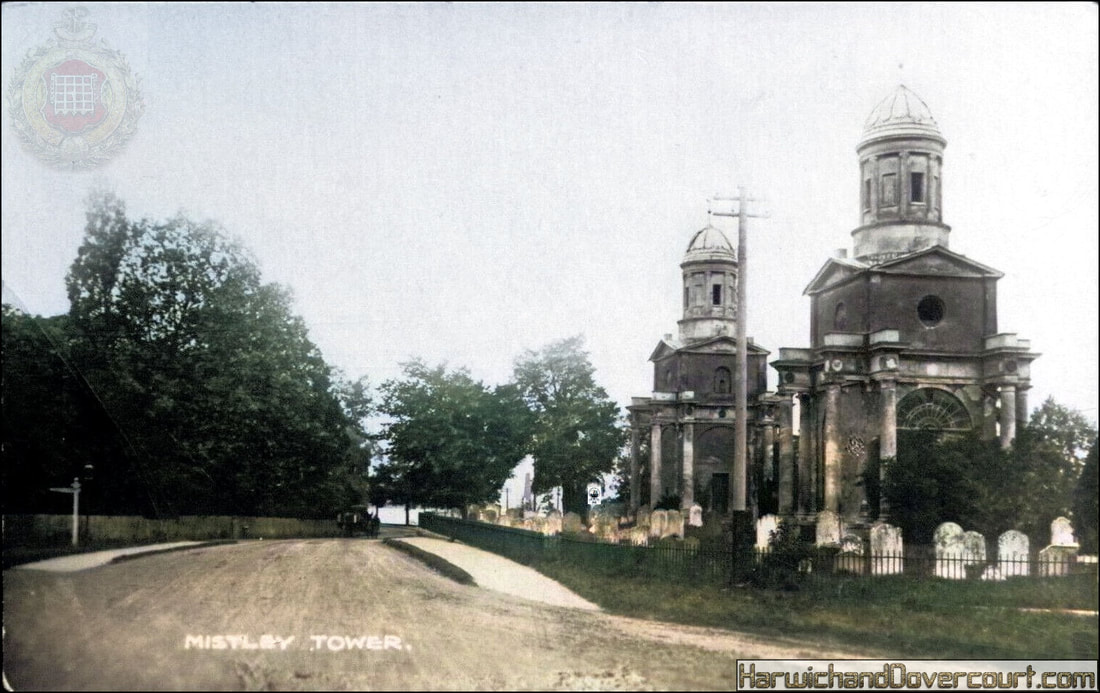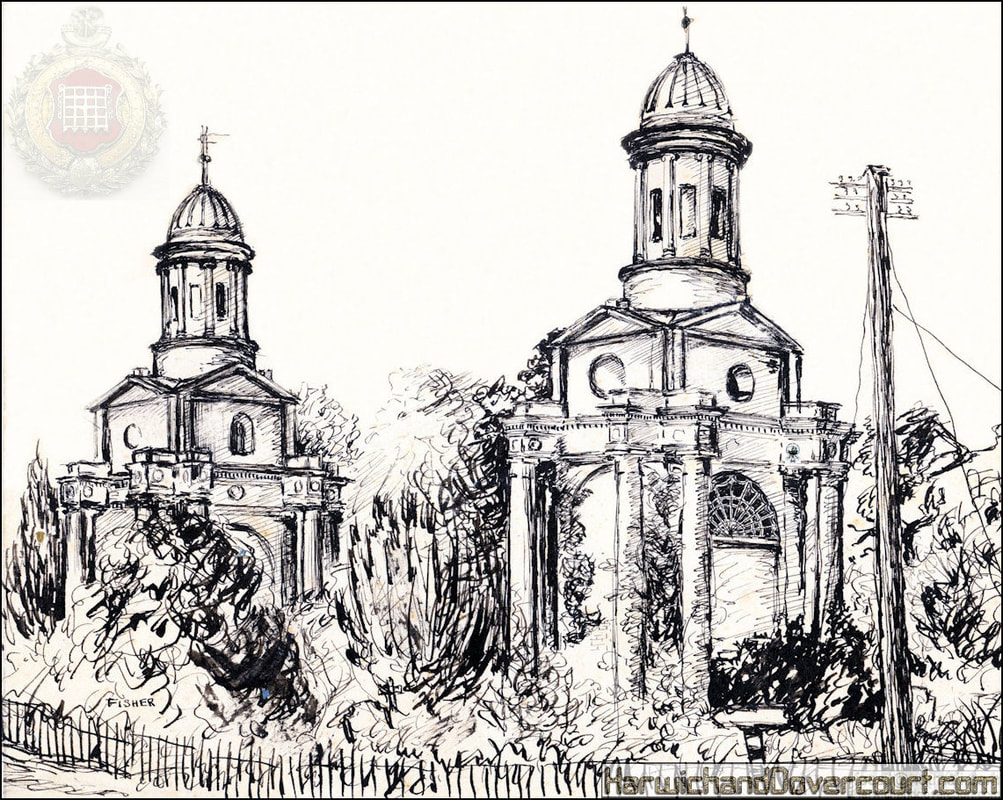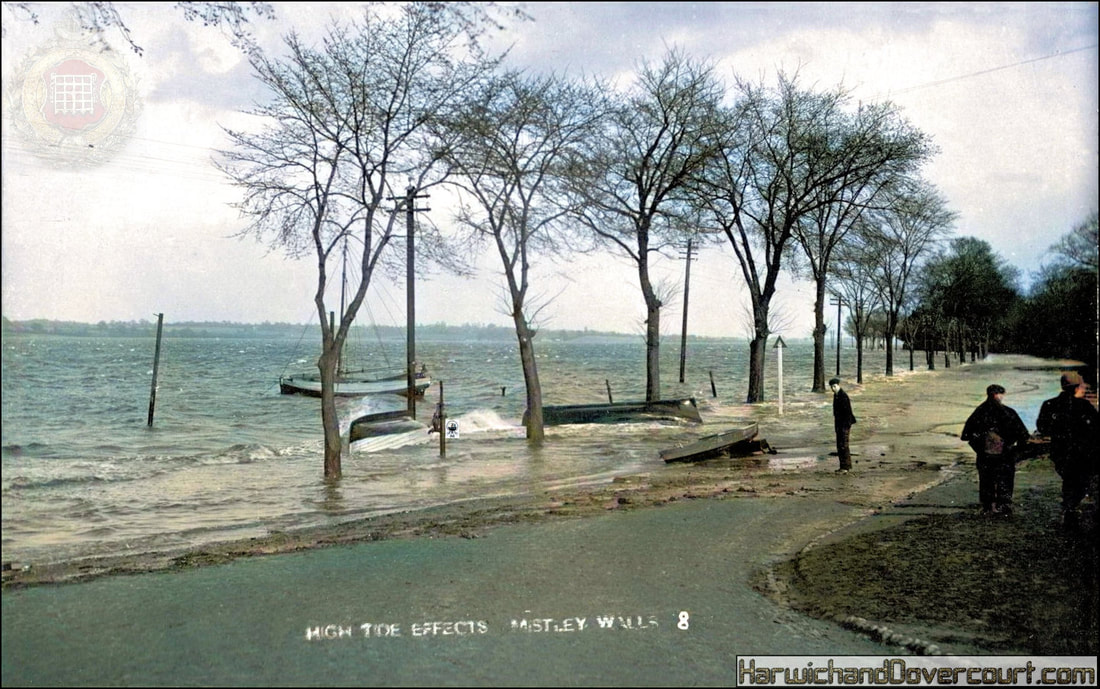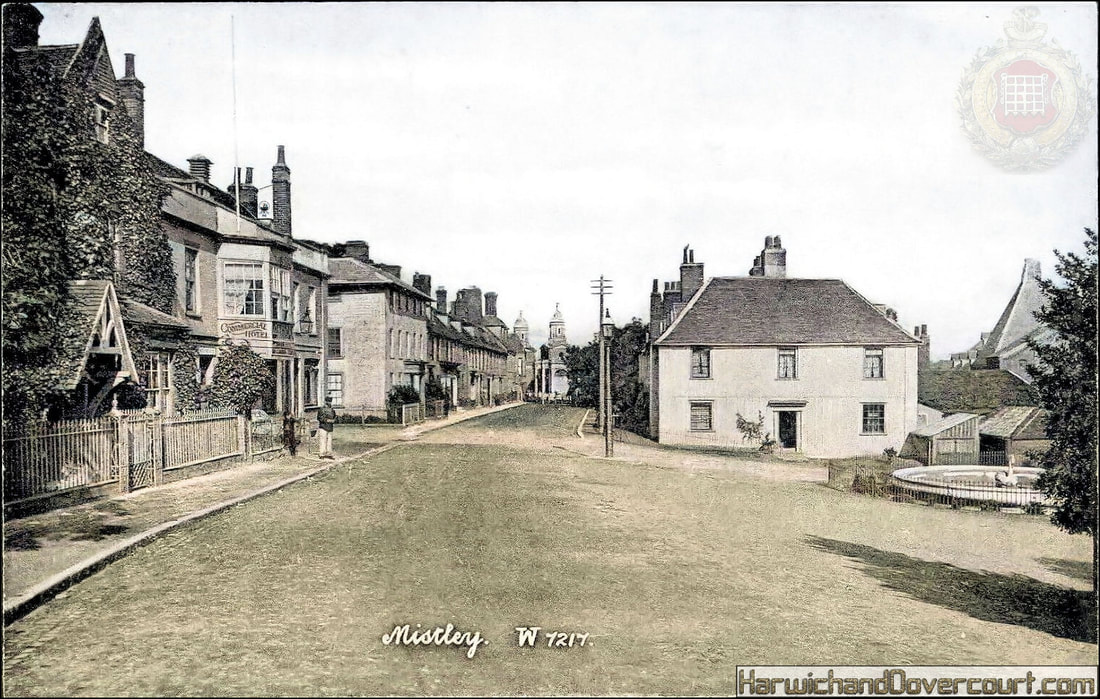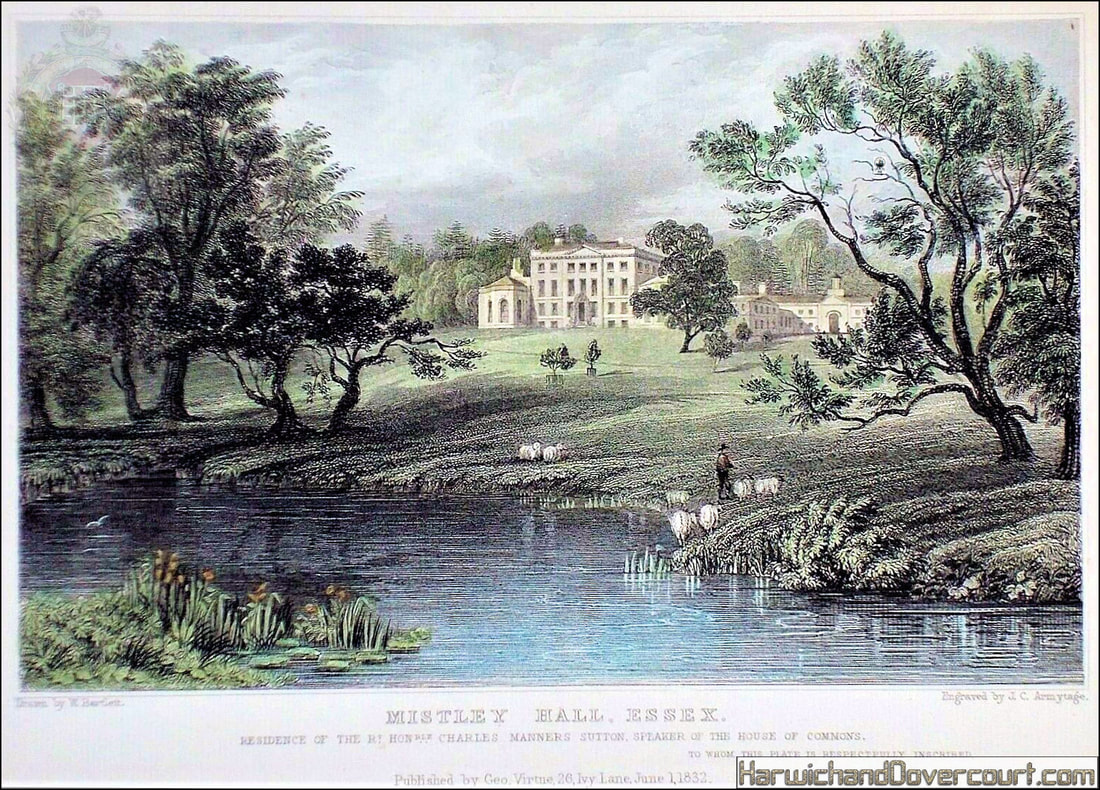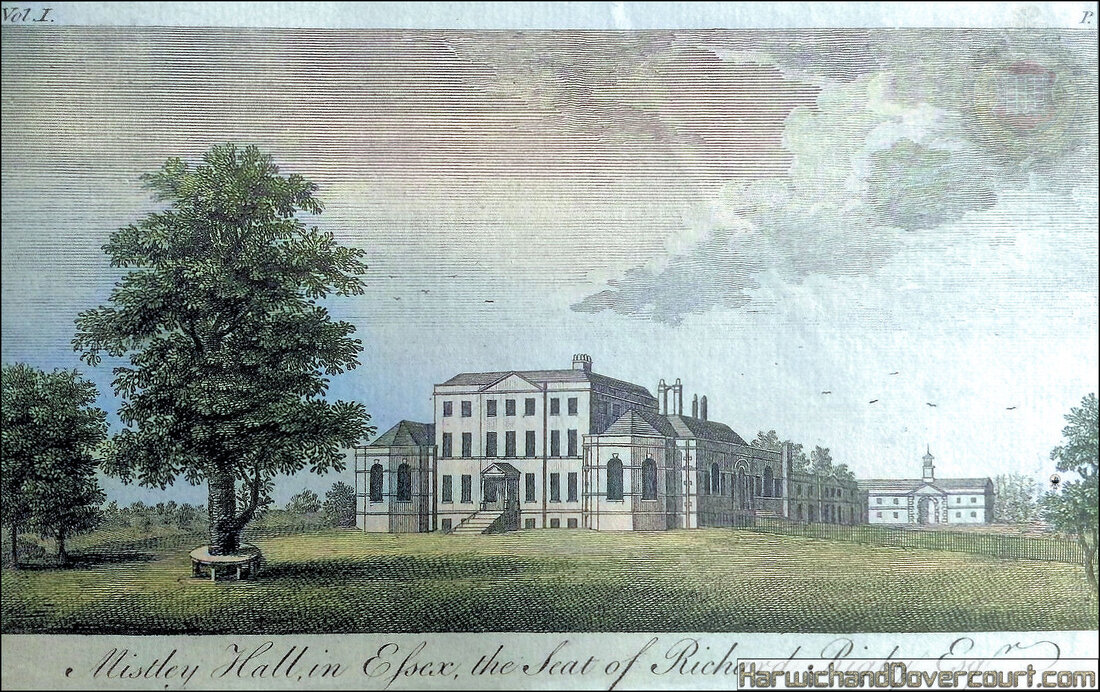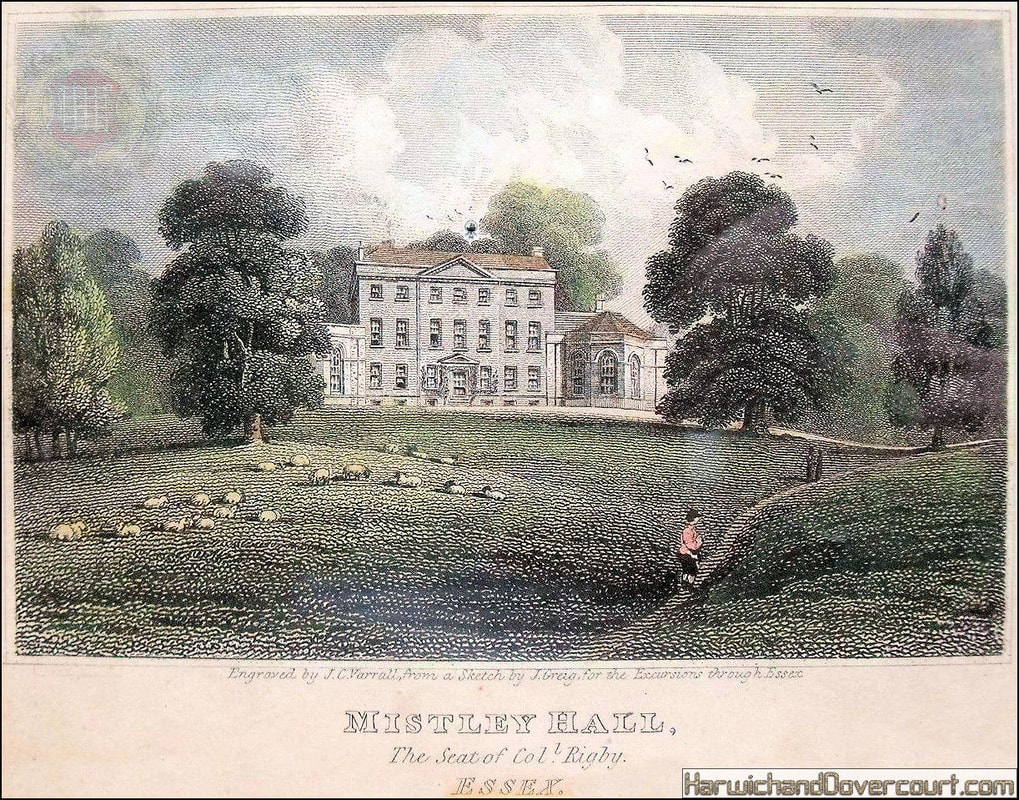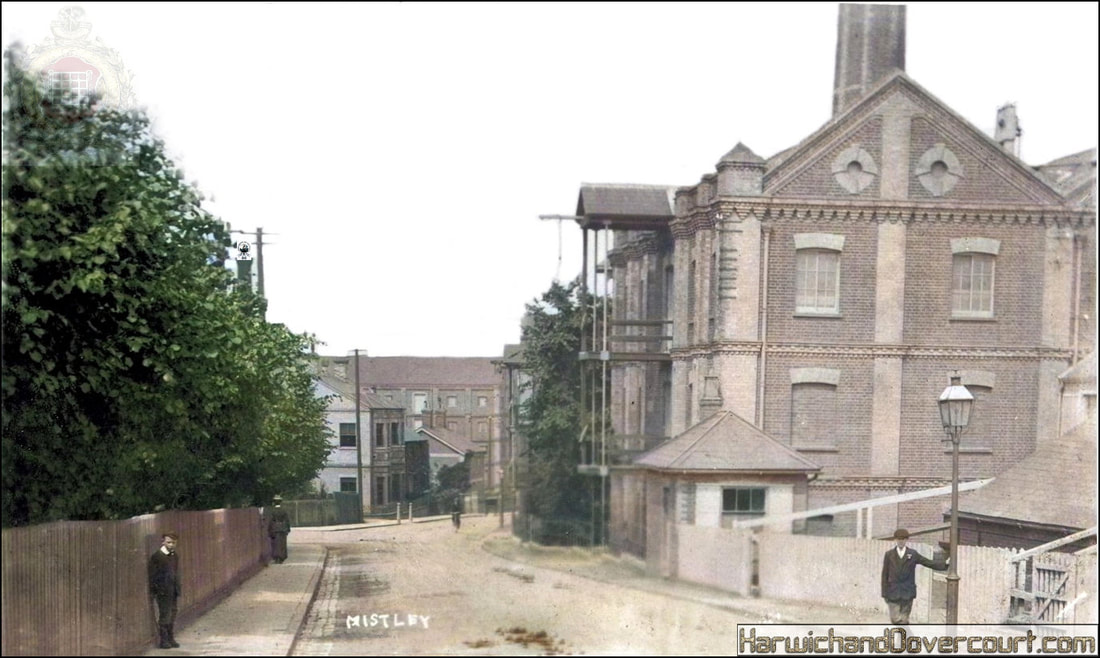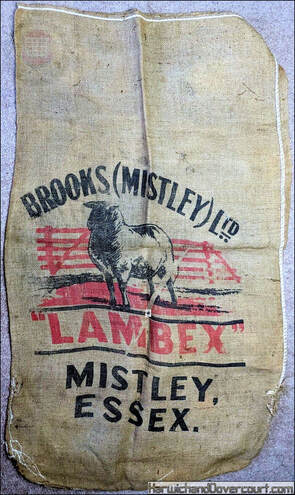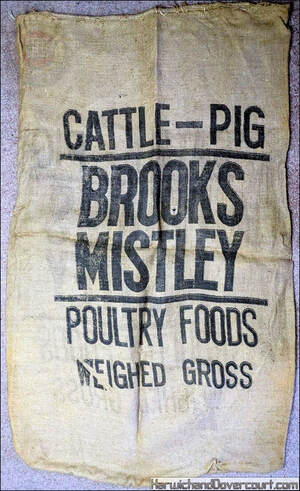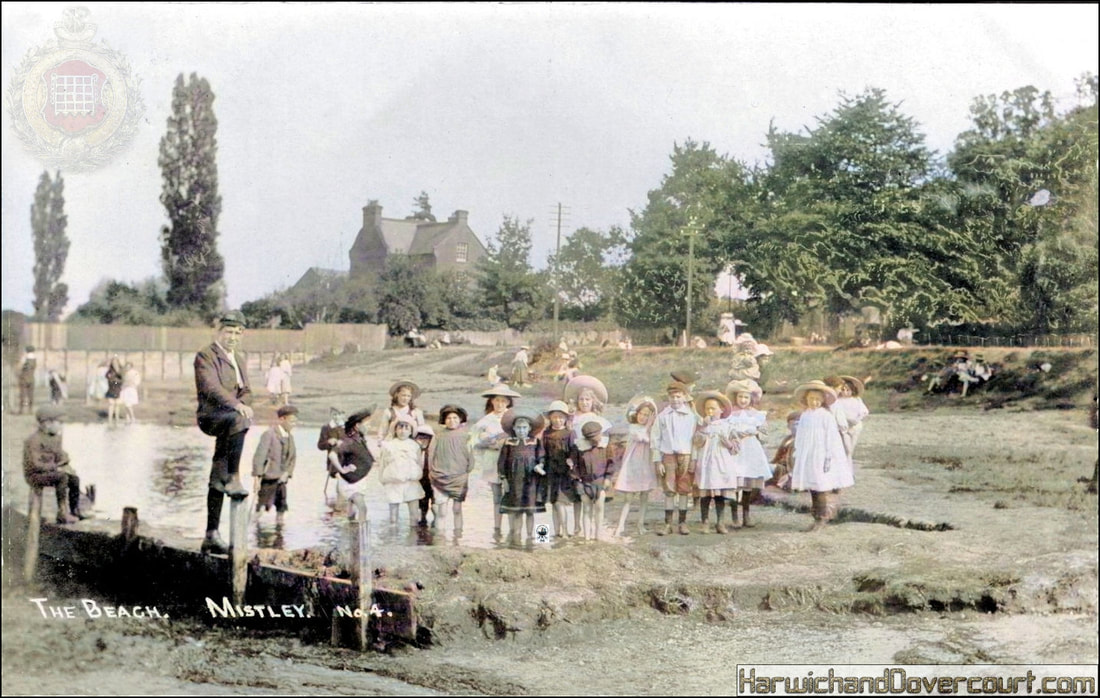Aerial Photography
Mistley is a small riverside town, noted for its swans. In the 18th Century plans were developed to turn Mistley into a saltwater spa. Two reminders from this failed scheme, are the swan fountain and Mistley Towers - Robert Adam's twin neoclassical structures. The Thorn Hotel has connections with Matthew Hopkins, the 17th C. Witch-finder General.
The eastern tower of the Mistley Towers was originally the chancel of the church and inside you can still see its painted commandment boards and a painted representation of the Holy Trinity on the ceiling. The western tower is identical internally, though without the painted decoration.
The eastern tower of the Mistley Towers was originally the chancel of the church and inside you can still see its painted commandment boards and a painted representation of the Holy Trinity on the ceiling. The western tower is identical internally, though without the painted decoration.
~ #01 ~ Mistley, Essex "From The Air" (1964) H&D ~
Quayside
~ #02 ~ Mistley Quay, Near Harwich, Essex (1822) H&D ~
~ #03 ~ Mistley Quay, Near Harwich, Essex (1831) Unknown H&D ~
~ #04 ~ Mistley Quay, Essex (1833) Geo Virtue H&D ~
~ #05 ~ Mistley Quay (1830) by Smiths in 1906 H&D ~
~ #06 ~ Mistley Quay, Essex (1906) by F.Newell of Manningtree ~
Ecclesiastical
~ #07 ~ Mistley Thorn Church, Essex (1833) Geo Virtue H&D ~
~ #08 ~ Mistley Thorn Church, Essex (1830) by Smiths in 1906 H&D ~
~ #09 ~ W 7220 St Marys Church, Mistley, Essex (1904) Whydhams H&D~
~#10 ~ No 11 Mistley Church, Essex (1909) H&D ~
The Railway
~ #11 ~ Mistley Station, Essex (1907) by F.Newell H&D ~
~ #12 ~ Mistley Station, Essex (1909) unknown Publisher H&D ~
~ #13 ~ Mistley Station, Essex (1958) Root H&D ~
The Residents
~ #14 ~ Mistley School, Essex (1907) by F.Newell H&D ~
~ #15 ~ Mistley Bell Makers, Essex (1896) H&D ~
First peal of Mistley Church Bells cast by Alfred Bowell in 1897, for the Diamond Jubilee of Queen Victoria 1837-1897
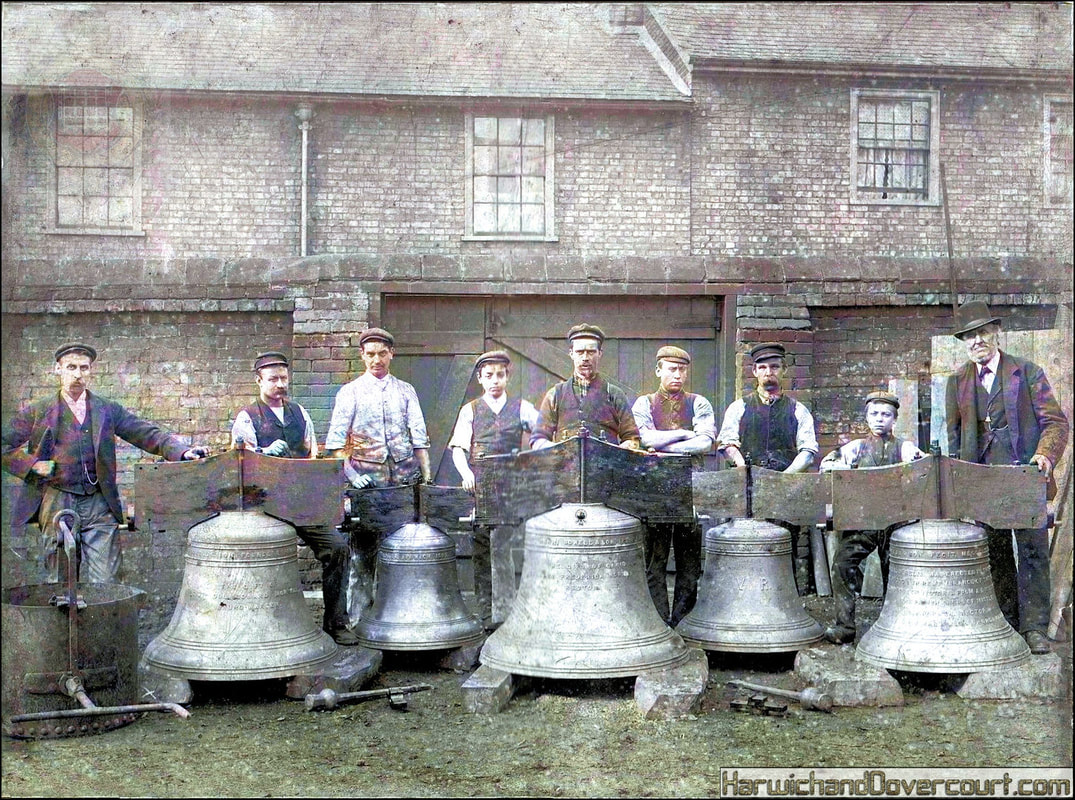
These church bells were cast a year earlier in 1896 at the Wykes Bishop Street Foundry in Ipswich, for use in Mistley Church, Essex.
The foundry was founded by Alfred’s father Henry Bowell (previously a ship’s carpenter), his son Alfred and later his Grandson Frederick all worked in the family business. Between 1896 and 1939 they cast about 400 bells and maintained many bell frames in the area. Alfred is recorded as working as far away as Bishops Castle in Shropshire where he rehung the bells on new fittings in 1912.
During the First World War no bells were allowed to be cast and instead the output of the foundry was diverted to munitions work. As an idea of the costs involved, in 1925 Alfred presented a bill to St Margaret’s Church Ipswich for the overhauling of the fittings of the eight bells £35, to recasting the fourth bell £25, for taking down the small bells for tuning £5 and for recasting the Treble £15 – a total of £80.
The last bell was cast at their foundry in 1939 and, whilst the foundry remained in use for munitions and general engineering for a while, it closed in 1950.
From left to right in the photo we have, Alfred Bowell, Chas Adams, W.Harvey, G.Harvey, Luke Smith, H.G Weeham, Chas Hewton, Ed Hewton and the head of the foundry Henry Bowell.
The foundry was founded by Alfred’s father Henry Bowell (previously a ship’s carpenter), his son Alfred and later his Grandson Frederick all worked in the family business. Between 1896 and 1939 they cast about 400 bells and maintained many bell frames in the area. Alfred is recorded as working as far away as Bishops Castle in Shropshire where he rehung the bells on new fittings in 1912.
During the First World War no bells were allowed to be cast and instead the output of the foundry was diverted to munitions work. As an idea of the costs involved, in 1925 Alfred presented a bill to St Margaret’s Church Ipswich for the overhauling of the fittings of the eight bells £35, to recasting the fourth bell £25, for taking down the small bells for tuning £5 and for recasting the Treble £15 – a total of £80.
The last bell was cast at their foundry in 1939 and, whilst the foundry remained in use for munitions and general engineering for a while, it closed in 1950.
From left to right in the photo we have, Alfred Bowell, Chas Adams, W.Harvey, G.Harvey, Luke Smith, H.G Weeham, Chas Hewton, Ed Hewton and the head of the foundry Henry Bowell.
